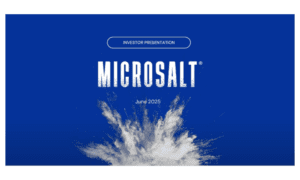The rapidly changing salt market is poised to have a huge impact on food manufacturers and ingredient suppliers.
The low-sodium revolution continues to roll in 2023. The attitudes of both the public and regulatory bodies have begun to shift in favor of low-sodium lifestyles and production methods, driving wholesale changes that food manufacturers must adapt to in order to stay competitive. Here’s what you need to know to stay on top of the latest trends in the salt market.
Low-sodium market trends
Most people don’t even know how much sodium they’re consuming, driving a trend for greater clarity and transparency on food labels. In the past, manufacturers have been able to obscure the amount of sodium in their products with some opaque phrasing, but those days are rapidly disappearing.
Today’s consumers want to know how much sodium is hiding in the foods they eat, and if you don’t shoot straight with them, you risk losing their trust in your brand. Of course, that also means that you need to ensure that your products contain an acceptable amount of sodium, another industry standard that’s rapidly changing.
The WHO’s new low-sodium benchmarks, which call for a 30 percent reduction in sodium consumption worldwide by 2025, have already begun to shape the market. This new emphasis on healthier production processes is poised to have a huge impact on food manufacturers of all kinds going forward.
Increased demand for low-sodium products
Evolving opinions on salt were decisively captured in this infographic from the AHA. A whopping 85 percent of Americans support at least some sodium-reduction initiatives, and almost two-thirds of the population wants the government to get involved in setting limits on the amount of sodium added to processed and prepared foods. This is due in large part to growing consumer health consciousness as conditions like hypertension, stroke, and heart disease – all linked in part to unhealthy diets and salt intake – are reaching epidemic levels.
From the CDC and FDA to initiatives like the Pan-American Health Organization/WHO, national and international focus on the low-sodium lifestyle has never been more intense – or welcomed. Because these drives align with what the public already wants: less sodium.
The market for low-sodium products
The market for low-sodium foods and beverages is expanding all over the world. Some highlights:
- U.S. – The American low-sodium market is valued at $54 billion and rising as of 2023.
- Asia Pacific – Held 35.1 percent of the global revenue share of the reduced-sodium market in 2021, which is increasing due to population numbers and health concerns.
- Middle East and Africa – Predicted to be the fastest-growing low-sodium market regions heading into 2030 as healthier food choices are made by more informed consumers.
The greatest opportunity for food manufacturers is brand evolution in line with public tastes and regulatory requirements. And key players like Kraft Heinz, Kellogg, and Nestlé (the world’s largest food and beverage company) are already researching lower-sodium alternatives.
There’s a broad array of foods that can be adapted to the low-sodium lifestyle since almost everything people eat contains some degree of salt. So savvy manufacturers can make their mark in nearly any edible market simply by providing a low-sodium option in a sector saturated with unhealthy foods.
Outlook for the low sodium market
Growth projections are notoriously variable, but they’re universally positive for the low-sodium food sector, which isn’t surprising for a market witnessing both unprecedented consumer demand and productive regulatory involvement. MarketWatch expects the market to see a compound annual growth rate (CAGR) exceeding 12.10 percent. Globe Newswire has a lesser projection of 5 percent CAGR, but even that’s toward a $431.1 billion market size by 2028.
The impact of emerging trends on the low sodium market is being – and will continue to be – felt by every food manufacturer in the world. Existing brands who choose to rethink their sodium strategy can continue to thrive, while opportunities are ripe for new low-sodium players to enter the game. This should drive competition and industry-wide dedication to making the healthiest products possible, which can only benefit the consumer.
Market opportunities and challenges
The opportunities highlighted above do come with some associated hurdles. Firstly, many consumers still associate “low-sodium” with a bland or unpleasant flavor. It will take a concerted effort and palatable solutions to reverse this negative perception and get them to try new things. It also takes time to research and develop new products before going to market.
Food manufacturers may default to using traditional salt substitutes like MSG and potassium chloride to join the low sodium revolution, but these options aren’t any healthier than the sodium they replace. Other companies are experimenting with sodium-reducing ingredients like yeast extracts, mineral salts, and amino acids, the impact of which remains to be seen.
Then there’s the concern among food brands that their manufacturing processes may face significant and costly overhauls to enter the low-sodium market. The biggest problem lies at the root of both challenges: finding a replacement for traditional salt that tastes great but won’t harm people’s health or require manufacturers to make expensive production changes. And that’s where MicroSalt® comes in.
Ride the Low-Sodium Wave with MicroSalt®
As pressure from consumers and regulatory agencies continues to mount, manufacturers who want to compete in the new low-salt landscape need to find ways to reduce the sodium levels in the products without sacrificing flavor. The good news is that MicroSalt® makes it easy. Our all-natural microparticles – perfect for food-manufacturing applications and dinner-table additions alike – feature all the flavor of traditional salt with only half the sodium.
What’s more, you can adapt your recipes to MicroSalt® without making wholesale changes to your manufacturing processes. It’s a win-win for manufacturers and consumers alike.
That’s why our dedication to the low-sodium revolution has netted MicroSalt® numerous awards, including the P&G Alumni Network’s 2021 Star Entrepreneur award and Sodium Reduction Technology Provider of the Year for 2022. Just call 877-825-0655 or connect via our message page, and let’s talk about how to make 2023 the year you optimize your low-sodium market share!




